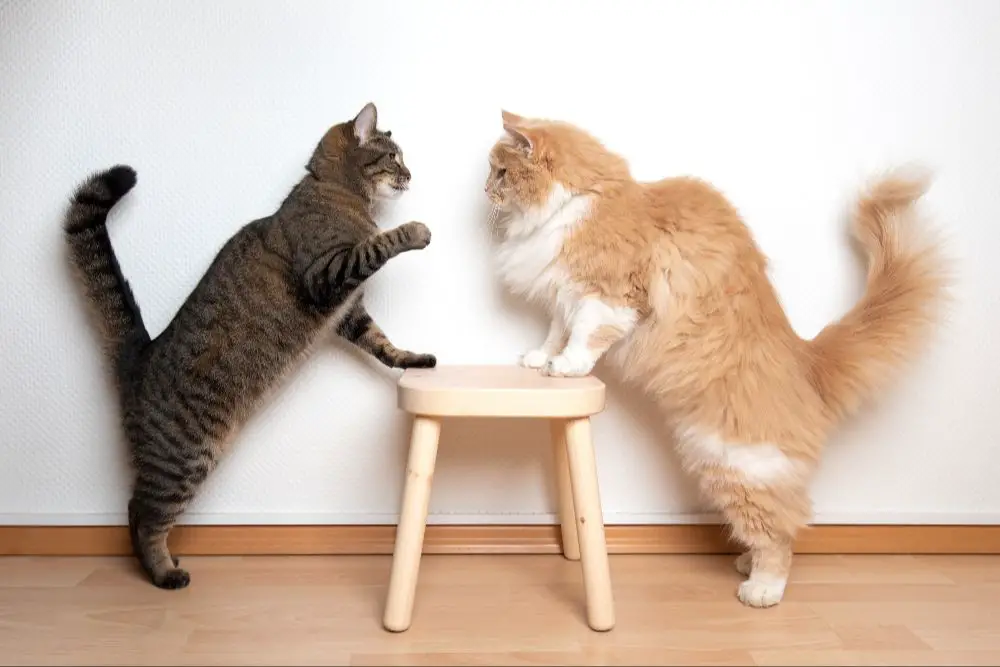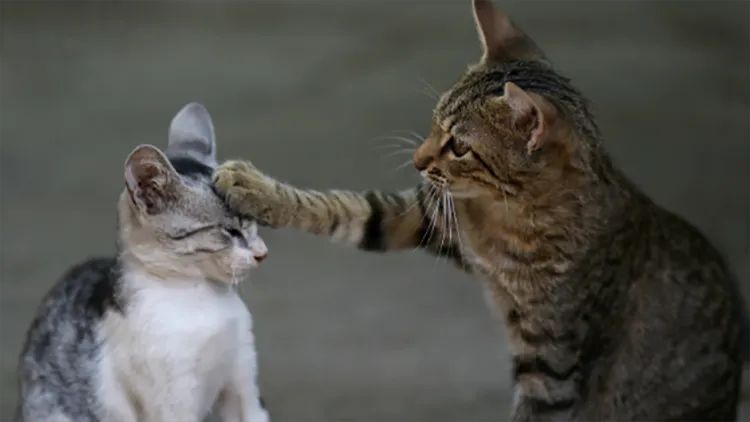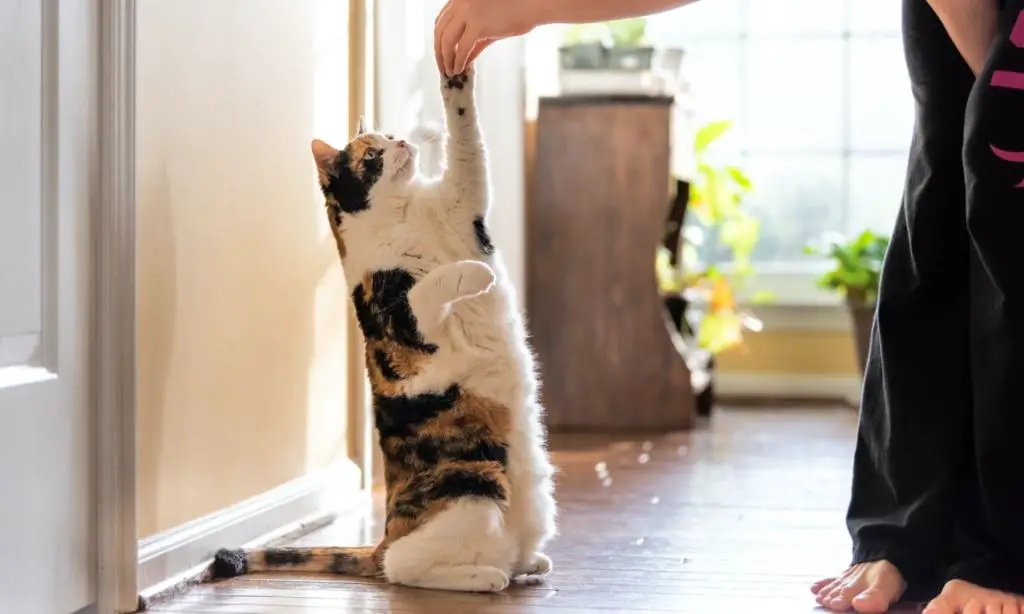Cat fights are common but distressing occurrences for cat owners. Aggression and confrontations between cats arise from natural territorial instincts and competition over resources like food, resting spots, and mates. While fights are part of normal cat behavior, they can be dangerous and lead to injury. Physical clashes are usually brief but intense, with cats displaying aggressive body language like flattened ears and arched backs before attacking each other. Hissing, growling, swatting, and biting are common during cat fights as they determine dominance. Understanding the causes, signs, and nature of cat aggression can help owners minimize conflicts and prevent escalation to dangerous levels.
Causes of Cat Fights
There are several common causes for cat fights. The most prevalent are territory disputes, competition for mates, and competition for resources like food, water, and shelter.
Territory disputes are often a major factor in cat fights. Cats are very territorial animals and they frequently get into confrontations with other cats trespassing in their area (Purina). This is especially common between cats that live together or in close proximity as they will often compete for ownership over shared spaces. Marking territory with urine and aggressively defending areas are ways cats try to claim spots as their own.
The desire to mate can also spark aggressive fights between cats. Tomcats frequently get into vicious fights over female cats in heat. The competition to mate and pass on their genes drives male cats to battle others vying for the same female (PetMD). Even neutered males may still fight over females due to lingering hormonal and territorial drives.
Limited resources like food, water bowls, litter boxes, shelter spots, and prime sunbathing areas can cause tensions between cats sharing the same environment. When essential resources are scarce, cats become more protective and competitive which can lead to altercations with other cats (ASPCA).
Cat Body Language Before a Fight
Cats have complex body language and display a variety of signals prior to engaging in fights. Understanding these signals can help owners identify and prevent potential aggressive behaviors between cats.
A cat who is feeling threatened or aggressive will often pull their ears back against their head. This helps protect a vulnerable part of their body during a confrontation. An arched back, piloerection (raised fur), and low growling can also precede an attack as the cat tries to look bigger and more intimidating (Source). Swishing or thumping of the tail indicates agitation.
Direct prolonged staring is a dominant behavior, while blinking is a friendly gesture. So if two cats are staring intensely at one another without blinking, trouble is likely brewing. Yowling, hissing, and spitting are sounds that signal a cat is unhappy and may lash out.
Understanding these subtle cues allows owners to intervene and redirect attention before aggression occurs between housemate cats. Slow blinking, treats, and toys can help ease tension and avoid a fight.
During the Fight
When cats engage in physical combat, the fighting quickly escalates from aggressive posturing to intense violence. The cats will begin hissing, screaming, and growling as they try to intimidate each other. As one cat attacks, the other will respond in defense. The cats bite and scratch each other aggressively with their sharp teeth and claws. They tend to target the head, neck, ears, and front legs – vulnerable areas to cause damage.

According to Cole & Marmalade, “Fighting cats are focused on causing harm and will bite and scratch whatever target is available to them.” The fights usually only last a few minutes, but can leave both cats with injuries like bite marks, scratches, puncture wounds, and abscesses [1]. Some fights can be so violent that they lead to serious injuries for the cats involved.
Stopping a Cat Fight
To stop a cat fight in progress, there are a few effective techniques you can try:
- Create a loud noise – Clap your hands loudly or bang pots and pans together. The sudden noise can startle fighting cats enough to get them to disengage.
- Use a barrier – Place a large object like a cushion or cardboard between fighting cats to physically separate them and block their view of each other. This can help interrupt the fight. Be cautious when getting close to aggressively fighting cats.
- Spray with water – A spray bottle, hose, or squirt gun can be used to spray the cats with water and get them to break apart. The surprise of the water often stops cats in their tracks. Make sure not to aim directly into a cat’s face.
- Distract with toys or food – Toss a toy near the cats or shake a bag of treats to grab their attention away from each other and onto something positive instead. This diversion tactic can be effective.
Try to intervene as soon as possible in a safe manner. Removing the cats from each other’s sight for a while can help simmer things down after separating them.1

After the Fight
Immediately after a cat fight, it’s important to check both cats for any injuries sustained during the altercation. Look for bites, scratches, limping, or any other signs of harm. According to Furratic Behavior, treat any wounds right away by cleaning them with a pet-safe antiseptic and applying antibiotic ointment. If the injuries are severe, contact your veterinarian.
In addition to physical injuries, cat fights can cause psychological distress. After an aggressive encounter, cats often remain agitated and stressed. It’s best to separate the cats into different rooms where they can calm down. As recommended by Woofpurnay Vet, allow the cats space apart for a few hours or days depending on the severity of the fight. This gives them time to relax and return to their normal temperament before attempting to reintroduce them.
Monitor the cats closely in the hours and days after a fight. Look for any changes in behavior like hiding, loss of appetite, or aggression that could indicate lasting trauma. If the cats remain hostile, anxious, or hurt, consult your veterinarian for advice on facilitating their recovery.
Preventing Future Fights

To prevent future fights between cats in the same household, there are a few effective strategies you can try:
Separate Resources: Providing separate resources like food bowls, water bowls, litter boxes, scratching posts, toys, and beds can help reduce competition and territorial behavior. Cats should have their own spaces that they can retreat to when needed. Aggression Between Cats in Your Household
Pheromone Diffusers: Using synthetic pheromone diffusers like Feliway can help relieve stress and anxiety in cats. The pheromones promote calmness and relaxation. Place the diffusers in rooms where the cats spend time together. How to Stop Cats Fighting & Why it Happens
By reducing competition over limited resources and introducing calming pheromones, future fights are less likely to occur between cats sharing a home.
When to Seek Help
If your cats are fighting frequently and aggressively, resulting in serious injuries like deep bites and scratches, it’s important to seek help from your veterinarian. According to the Cornell Feline Health Center, “Medical intervention may be required for cats that fight excessively and cause significant injuries”.
Signs that you need to take your cat to the vet include:
- Frequent and intense fighting that is escalating in aggression
- Bites or scratches to the face, ears, limbs or body that break the skin
- Wounds that won’t stop bleeding
- Limping, difficulty walking, or other signs of injury
- A bite abscess or infection
Your vet can check for injuries, provide treatment, and prescribe medication if needed to help reduce your cat’s aggression. They can also refer you to a veterinary behaviorist who can do a full behavioral assessment and help develop a plan for resolving conflict between your cats.
Don’t wait to seek help if fights are frequent or causing harm. The sooner the aggression is addressed, the better chance you have of restoring peace and preventing further injuries.
Training for Non-Aggression
You can train your cat to be less aggressive and more tolerant of other cats. The key is to reward calm interactions and build positive associations.
When your cat encounters another cat and remains relaxed, immediately reward them with a treat and praise. This reinforces that calm behavior around other cats is good. You can also try distracting with play when they start getting riled up. Tossing a toy to redirect their energy.
It’s important not to punish aggressive reactions, as that can make cats more anxious and reactive. Stay positive. With time and consistency, your cat can learn that being chill near other cats is beneficial.
You can aid this training by ensuring your cat is getting adequate playtime and environmental enrichment. A bored cat has excess energy that can lead to unnecessary fights. Meeting their needs makes non-aggression easier to achieve.
Additionally, use slow introductions to build positive associations with other cats. Let them smell each other through a door first. Reward calm interactions and take it slow. With patience, your cat can learn to see other cats as friends, not foes.

Providing a Peaceful Home
One of the most effective ways to prevent cat fights is to provide an enriching environment inside your home. By ensuring each cat has space they feel is “theirs”, while providing shared territory that feels peaceful, you can reduce feelings of defensiveness. Routines also help cats feel secure and avoid conflict.
Creating dedicated spaces for each cat allows them to have their own territory within the home. Provide multiple high resting spots like towers, shelves, or windowsills. Place food/water bowls and litterboxes in separate areas. Cat trees and scratching posts also give cats appropriate outlets. Ensure each cat still has access to sunny spots, cozy nooks, and family life.Source 1
In shared spaces, adding environmental enrichment like cat grass, catnip, and interactive toys can make the home engaging on its own. Using pheromone or essential oil diffusers may help ease social stress between cats. Establish set routines for feeding, playtime, grooming, and affection. A calm, consistent environment can reduce a cat’s desire to “guard” territory from other cats.Source 2

